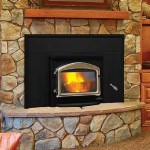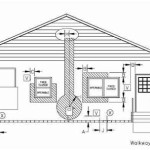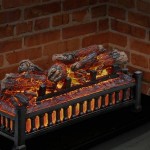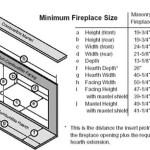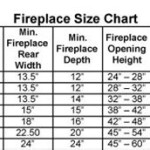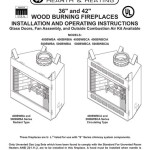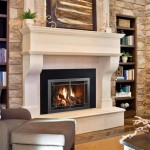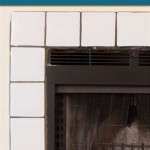Wood Burning Open Fireplaces: A Guide to Installation, Benefits, and Considerations
Wood burning open fireplaces are a classic and timeless feature that can add warmth, ambiance, and charm to any home. While their popularity may have waned somewhat in recent years due to concerns about efficiency and emissions, they remain a beloved choice for many homeowners. Understanding the intricacies of these fireplaces, from installation to benefits and considerations, is crucial for making an informed decision. This article delves into the world of wood burning open fireplaces, providing insights into their key aspects.
Installation Considerations for Wood Burning Open Fireplaces
Installing a wood burning open fireplace is a significant undertaking that necessitates careful planning and professional expertise. The process involves several critical factors:
- Location and Design: Determining the ideal location for the fireplace is paramount. Consider factors like the existing structure, desired aesthetics, and proximity to ventilation sources. Professional designers can guide you in choosing the right size, shape, and style for your fireplace.
- Fireplace Construction: The construction of a wood burning open fireplace involves specialized masonry work. Building codes and safety regulations must be strictly adhered to, requiring the expertise of licensed contractors. This includes the selection of appropriate materials such as firebrick, mortar, and stone, as well as the creation of a sturdy hearth and chimney.
- Chimney Installation: A robust chimney plays a vital role in ensuring proper ventilation and safety. Chimneys need to be adequately sized, constructed with fire-resistant materials, and inspected regularly to prevent blockages and potential fire hazards.
- Fireplace Inserts: While traditional open fireplaces offer a classic look, modern fireplace inserts provide a practical and efficient alternative. These inserts function as self-contained fireplaces, often with glass doors, improving heating capacity and reducing emissions.
Benefits of Wood Burning Open Fireplaces
Despite their drawbacks, wood burning open fireplaces offer several advantages:
- Aesthetic Appeal: Open fireplaces create a warm and inviting ambiance that adds character and charm to a home. The flickering flames and crackling sounds produce a comforting atmosphere, creating a sense of coziness.
- Heating: While not as efficient as modern heating solutions, a wood burning open fireplace can contribute to warming a room. The heat produced from burning wood can provide a sense of warmth and comfort, particularly during colder months.
- Cost-Effectiveness: Depending on the availability of readily accessible wood sources, a wood burning open fireplace can be a cost-effective way to supplement heating during colder months. This can help reduce reliance on other heating sources, saving on energy costs.
- Environmental Sustainability: Using wood as a fuel source can be considered environmentally sustainable, particularly when sourced from locally managed forests. However, it's crucial to choose sustainably harvested wood to minimize environmental impact.
Considerations for Wood Burning Open Fireplaces
Before committing to a wood burning open fireplace, it's essential to weigh the potential drawbacks and considerations:
- Efficiency: Open fireplaces are notoriously inefficient, losing a significant amount of heat up the chimney. They often require significant amounts of wood to produce a noticeable temperature increase, making them less effective for overall home heating.
- Emissions: Wood burning fireplaces contribute to air pollution and can release harmful particulates and gases. The emissions produced can be detrimental to indoor air quality and potentially impact the environment.
- Safety: Proper operation and maintenance are crucial for ensuring the safe use of a wood burning open fireplace. Fire hazards, including accidental fires, carbon monoxide buildup, and chimney fires, are potential risks that must be addressed.
- Maintenance: Wood burning open fireplaces require regular maintenance. This includes cleaning the fireplace, chimney, and surrounding areas, as well as ensuring a consistent supply of dry, seasoned wood. Neglecting maintenance can lead to inefficiency, safety hazards, and potential damage.
When considering a wood burning open fireplace, carefully evaluate the benefits and drawbacks, taking into account your specific needs and circumstances. Consulting with a professional fireplace installer can provide expert advice and ensure a safe and efficient installation.

Wood Burner Vs Open Fire Bowland Stoves

Practical Advice For Open Wood Fireplace From Camelot Real Fires

As Winter Bites Ministry Warns About Dangers Of Wood Burning Fires The Times Israel

Types Of Wood Burning Fireplaces Regency

Gas Stove Or Open Fire What S Best For Me Chesneys

Open Fires V Wood Burning Stoves The Grate Debate Country Life

Open Fires East Coast Flues Multifuel And Wood Burning Stove Suppliers Installers

Open Fires V Wood Burning Stoves The Grate Debate Country Life

Open Fire Gallery Scarlett Fireplaces

10 Tips To Improve The Chimney Draft Of Open Fireplace
Related Posts

